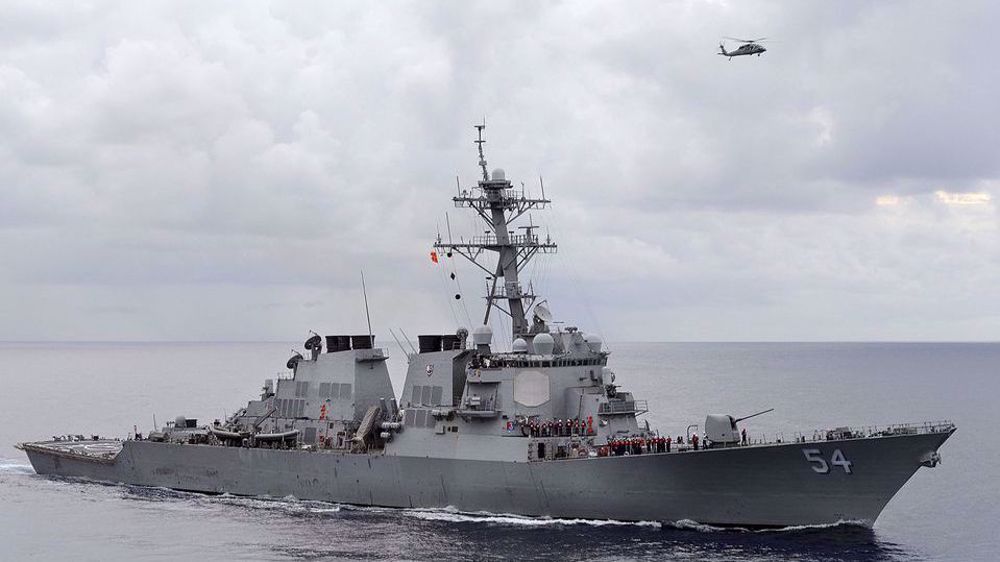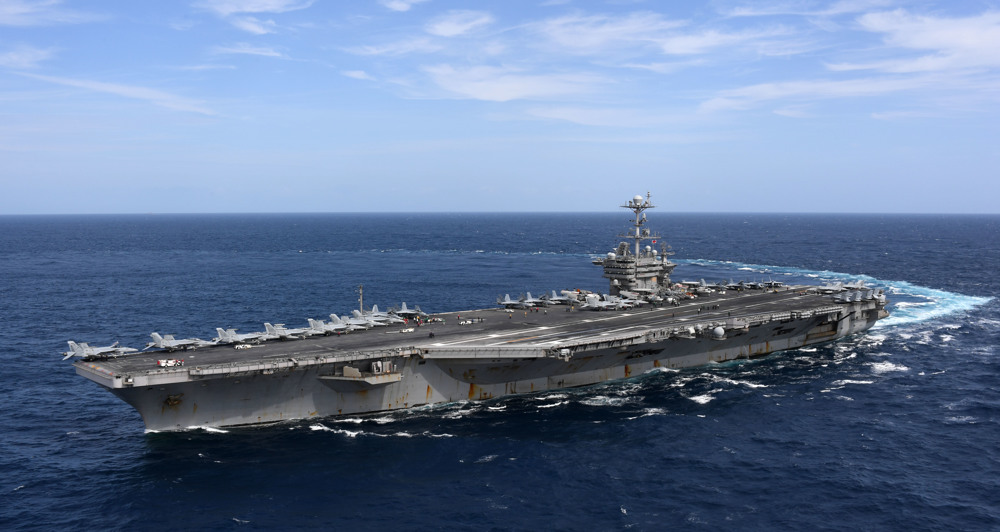Biden's military budget seeks greater China deterrence, nuclear funding
US President Joe Biden will submit a military budget proposal that aims to modernize the country’s nuclear arsenal in order to deter China, according to sources.
The $715 billion budget, which is slated to be sent to Congress on Friday, will shift funding from old systems and military equipment.
It is, instead, expected to focus on investments in troop preparedness, space, the Pacific Deterrence Initiative and nuclear weapons technology, the people familiar with the matter told Reuters.
The Pacific Deterrence Initiative was created to counter China with a focus on competition in the Indo-Pacific. It aims to boost US readiness in the region through funding radars, satellites and missile systems.
The Pentagon, in order to be able to pay for the shift, will divest some of its older equipment with higher maintenance costs, according to the people.
Those include four Littoral Combat Ships, several A-10 aircraft capable of providing close air support to ground troops, as well as the number of KC-10 and KC-135 planes in the mid-air refueling fleets.
Part of the proposed budget would also be used to buy ships, jets and pay for maintenance and salaries, however, an additional $38 billion is earmarked for military-related programs at the Federal Bureau of Investigation, Department of Energy and other agencies bringing the national security budget to $753 billion, equal to a 1.7% rise over the 2021 figure.
The new budget will aim to further develop and test hypersonic weapons and other "next generation" weapons systems as the US military seeks to build capabilities to counter Russia and China.
The Biden administration will also request 85 stealthy F-35 fighter jets manufactured by Lockheed Martin (LMT.N), according to the people.
The 2021 and 2020 presidential budgets asked for 79 and 78 of the jets respectively, ultimately Congress authorized more fighters. Senators and governors have, in the meantime, come out to support the jet which has a huge industrial base.
Meanwhile, the US Army's goal for troops in the budget was reduced very slightly, the people said.
"We must modernize if deterrence is to endure and, if confirmed, I would seek to increase the speed and scale of innovation in our force," Kathleen Hicks said in her testimony in February before she was confirmed as deputy secretary of defense.
This comes as China last week accused the United States of threatening the peace and stability of the Taiwan Strait after a US warship again sailed through the sensitive waterway.
According to the US Navy, the Arleigh Burke-class guided missile destroyer USS Curtis Wilbur sailed through the waters near Chinese Taipei on May 18.
"The ship's transit through the Taiwan Strait demonstrates the US commitment to a free and open Indo-Pacific,” the US Navy's 7th Fleet said. "The United States military will continue to fly, sail, and operate anywhere international law allows."
Chinese military forces tracked and monitored the ship throughout its voyage, said a spokesman for China's Eastern Theater Command, who also condemned the move.
Also, the Pentagon has announced multiple war games to be held across Europe, demanding that Russia should open up about its defense drills on its borders.
The announcement came after last month, Russia launched major military exercises in the Crimean Peninsula near the southern borders of Ukraine under the personal supervision of Defense Minister Sergei Shoigu. Around 10,000 ground troops and more than 40 warships took part in the maneuvers.
Moscow has reiterated that its military activities are taking place inside its sovereign territory and are in response to a stepped-up US and NATO presence near Russian borders.
London council to divest from firms arming Israel in Gaza genocide
Trump not content with Saudi Arabia's $600 billion offer, wants $1 trillion
Over dozen people killed in Shia-populated villages in Syria’s Homs
Joe Biden's legacy of genocide, deception and corruption
Hezbollah warns Israel over plan to delay withdrawal from Lebanon
Palestinian prisoner dies from torture in Israeli jail: Rights groups
Iran calls for protection of minority groups in Syria
VIDEO | A breath of relief: Aid flows into Gaza after months of deprivation















 This makes it easy to access the Press TV website
This makes it easy to access the Press TV website